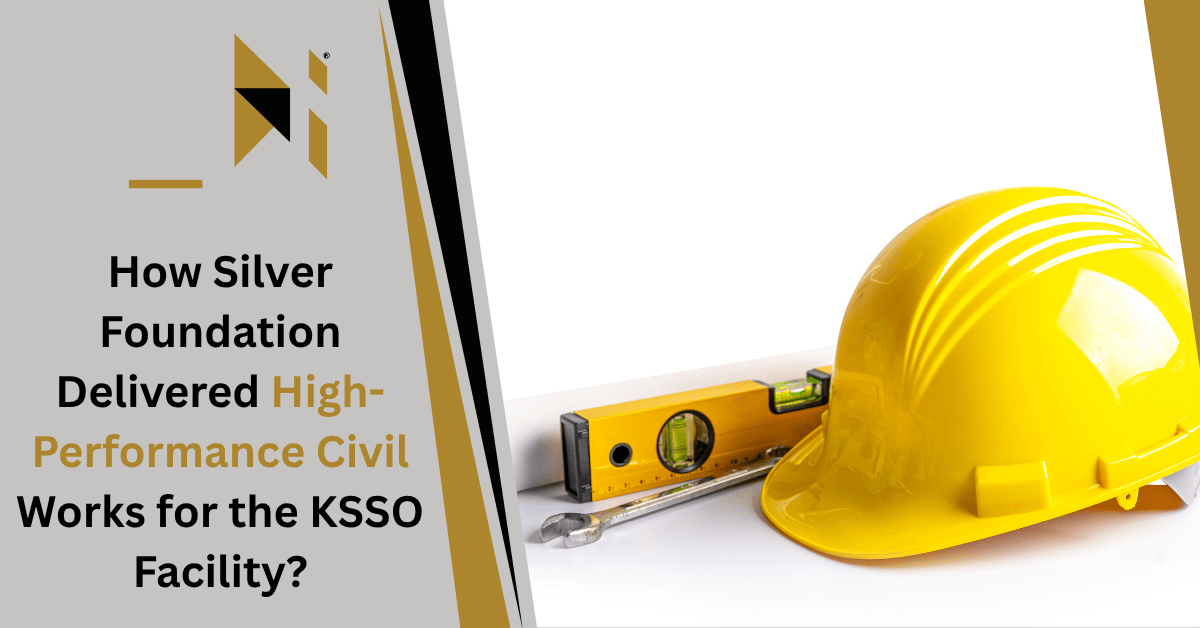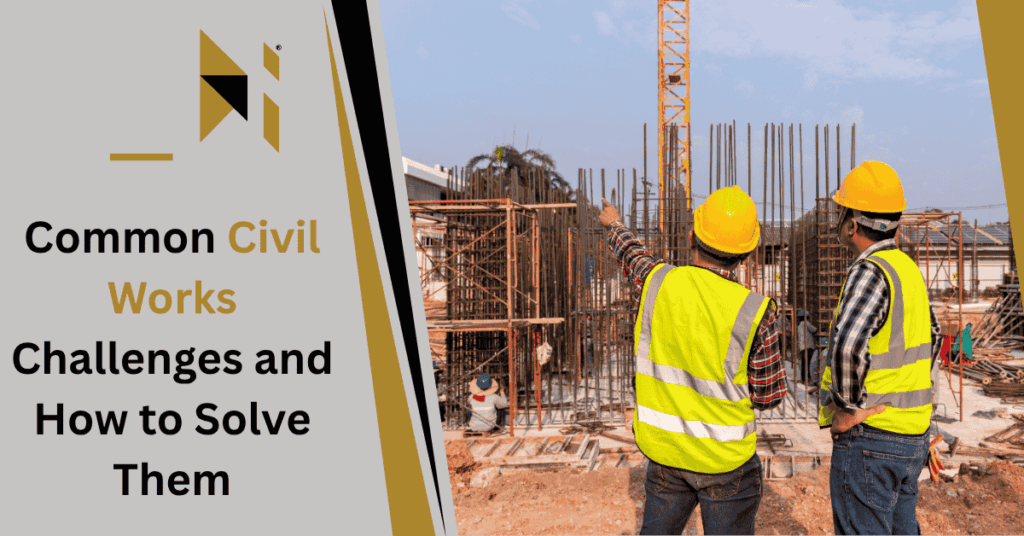Civil works form the backbone of every large-scale project, shaping the foundation on which lasting infrastructure stands. Known for its reliability and strong track record, Silver Foundation has built a reputation in civil engineering through consistent delivery of quality and innovation. From complex facilities like the KSSO project to diverse industrial sites, civil works ensure safety, efficiency, and long-term value. This blog explores the processes, innovative approaches, and common challenges within the field, while also examining practical solutions. With that perspective, we now move into a closer look at how building works drive successful project outcomes.
The KSSO Facility was constructed to serve the local community and meet industry needs. It is a center of innovation and training and operations, which gives a platform that is of benefit to various stakeholders. The scope of the project consisted of designing and building modern infrastructure. It was aimed at functionality, safety, and long-term development.
Its core lessons were to provide a modern facility that enhances services, provides opportunities, and ensures value to the area is sustainable. Silver Foundation has been chosen by its reputation, technical capabilities, and dedication to quality delivery. This results in its being a stable and reliable partner in this development.
Understanding High-Performance Civil Works
High-performance civil works can be described as the engineering solutions that are of high quality, efficient, and of value in the long run. Here, high-performance refers to structures and systems that extend beyond the minimal requirements to provide sustained outcomes.
The most important aspects of them are durability, which means that the work should resist time and conditions. It also counts precision that includes high accuracy in design and implementation. Safety ensures the protection of workers and users. Cost-effectiveness means that the work should ensure reasonable value and cost; and sustainability, which reduces its effect on the environment.
These factors are essential in the modern infrastructure development projects in which expectations are high and resources are well managed. Integrating all these, building works projects not only accommodate the needs of today but also equip the communities and industries to accommodate further development and strength in the future.
Key Elements in Project Planning & Initial Assessment
Defining Project Objectives
The initial plan in preparation is to establish specific goals. These are the purpose, anticipated results and benefits. Clear objectives drive all decisions, hold the project on course, and offer a good baseline in which success can be measured.
Assessing Site Conditions
The thorough evaluation of the conditions on the site helps in determining the opportunities and threats. It should be soil quality, terrain, accessibility and influence on the environment. This makes design decisions feasible, hazard-free and compliant with regulations.
Resource and Budget Planning
Good project planning involves a complete resource and budget review. This comprises materials, equipment, manpower and budget. The early forecasting minimizes risks, cost control and assists in attaining efficiency without a loss of quality and safety.
Regulatory and Compliance Review
It is essential to know laws, permits and safety standards. A close inspection is made to ascertain that there is adherence to the national and local laws. These requirements can help in planning the project to avoid delays, protect the credibility of the project and ensure it goes through the execution process with ease.
Risk Identification and Mitigation
Early risk identification allows one to prevent expensive failures. The risks can be in the form of design issues, financial risks, or environmental risks. The advanced planning of the mitigation strategies will make the project resilient. They make sure that the progress can proceed even in the case of some unforeseen challenges, and that the goals will be achieved
Insights on Material Selection & Quality Assurance
One of the most important activities in a project to make it strong and sustainable is the choice of materials. The measures are durability, environmental impact, and long-term performance in the actual working conditions. Partnerships with reliable suppliers are also essential since quality supply and reliability are ensured through trusted sources.
All materials are tested to ensure strength, safety and appropriateness to be used. On-site checks also confirm to international standards, thus not leaving anything to chance. Quality assurance teams oversee every step of work and make sure that the materials are both technical and practical.
As an illustration, the strength of a concrete batch was checked on a regular basis, and the resilience of steel was checked. This ensured high quality in these practices as trust was established with the stakeholders and the community.
Key Challenges and How to Overcome Them
Environmental Conditions
The project must face various challenges within environmental factors such as weather changes and soil changes. The factors are based on schedules and design stability. Careful observation, reactive planning and precautions ensured safety and performance and reduced effects on the surrounding ecosystems.
Technical Complexities
Special skills and accuracy were needed in the complex design elements and sophisticated systems. Engineers worked hand in hand to overcome issues in alignment, load management, and integration. Technical challenges are also addressed properly and without quality compromises by applying advanced modeling and expert review.
Logistics and Coordination
One of the greatest challenges was to control the supply chain and deliver materials promptly. The interactions between suppliers, contractors and site teams reduced the delays. Good communication networks and contingency planning meant that there was a smooth flow of work and the progress remained on schedule.
Silver Foundation’s Commitment to Future Civil Works
The Silver Foundation stays committed to carrying forward the lessons gained from recent projects into all future building works. Each experience has strengthened its ability to anticipate challenges, refine planning methods, and deliver with greater efficiency. These insights are now guiding the development of new frameworks that focus on proactive risk management and stronger collaboration with stakeholders.
The Foundation is also investing continuously in technology to improve accuracy, speed, and sustainability in construction. From advanced design software to energy-efficient machinery, these innovations are shaping projects that are both cost-effective and environmentally responsible. Sustainable practices, such as waste reduction and the use of eco-friendly materials, are becoming standard in every initiative.
Looking ahead, the vision is to achieve excellence in civil engineering by setting benchmarks in quality, safety, and innovation. The Silver Foundation strives to build infrastructure that not only serves current needs but also creates long-term value for communities and industries.
Conclusion
The success of the KSSO Facility is an indication that ambitious developments are achievable through careful planning, novelty and quality civil works. Silver Foundation has remained a good example of civil engineering through its long-term value and sustainability. We want to welcome you to find out how your next development can be assisted by trusted civil works solutions.
Frequently Asked Questions
1. What civil works did the Silver Foundation do for the KSSO Facility?
Silver Foundation delivered site preparation, foundation works, structural concrete, drainage systems, and utility installations, ensuring the facility’s durability, safety, and long-term performance.
2. How did the Silver Foundation maintain quality standards?
They used rigorous material testing, advanced construction methods, continuous site inspections, and compliance with international standards to guarantee high-quality, reliable, and safe civil works.
3. What challenges did you encounter in this project?
Key challenges included complex soil conditions, logistical constraints, and environmental requirements, which were resolved through innovation, adaptive design strategies, and real-time project management solutions.
4. Why is sustainability important in civil works?
Sustainability reduces environmental impact, ensures long-term durability, minimizes waste, and supports eco-friendly construction practices that benefit communities and infrastructure users alike.




